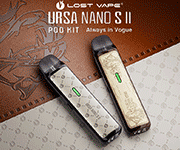Just for the record ive borrowed the below from somewhere on the net and will paste it back when ive finished with it.
The important bit is that VG technically "sets" at just below 17.8 degrees celcius and "melts" just above 17.8 degrees celcius.
To put it simply it will mix and blend more freely if its temprature is above 17.8 degrees.
Vegetable Glycerin (VG) Explained
Glycerin,also known as glycerol, is an organic compound of carbon, hydrogen and oxygenwith the chemical formula C3H8O3.
It is produced industrially, usually as a by-product of soap manufacture, from oils and fats.
It can be made from animal fat or, in the case of vegetable glycerin, vegetable oil.
The source of the raw material does not affect the chemistry of the final product,but, since glycerin is widely used in foods and medications, this distinctionis important for vegetarians.
It is also used as a sweetener and as aningredient in a number of cosmetic products.
Structure and Properties
The compound consists of a chain of three carbon atoms, to which are attachedhydrogen atoms on one side and hydroxyl (OH) groups on the other.
The three OH groups form hydrogen bonds between molecules, giving the compound a syrup-like viscosity and allowing it to dissolve easily in water.
Chemically speaking, glycerin is an alcohol, but for food purposes, it is classed as acarbohydrate because it provides calories and is not a fat or a protein.
Pure glycerol does not crystallize easily, but it can be chilled to form a solidthat melts at about 18°C.
It lowers the freezing point of water, however, by anamount that depends on the concentration.
For example, a 66.7% solution freezes at -46.1°C.
For this reason, it can be used as non-toxic anti freeze and for storing sensitive liquids, such as enzymes, in laboratory freezers.
Manufacture
Glycerol forms the “backbone” of many lipids, or oils and fats, and there arevarious processes that can be used to extract it from these substances.
Most glycerin is made as a by-product of the manufacture of soap.
In this process, either animal fat or vegetable oil can be used.
It is heated with a strong alkali, usually caustic soda (sodium hydroxide), which produces soap and a solution of glycerin in water.
This solution is then purified by distillation.
Vegetable glycerin can also be made directly from vegetable oil, often coconut or palm oil, by heating it to a high temperature under pressure with water.
The glycerin backbone splits off from the fatty acids, and is absorbed by the water, from which it is then isolated and distilled to obtain the pure product.Food-grade vegetable glycerin is 99.7% pure, with the remaining 0.3% being water. The interest in biodiesel fuel has resulted in the production of large amounts of low quality, non-food grade vegetable glycerin as a by-product.
Purifying the liquid is not considered economically viable and it cannot be casuallydisposed of as it contains toxic methanol, which is used in the manufacturing process.
As of 2013, there is much research into finding a use for this substance, something that does not require high purity glycerin.
One promising possibility is to use it as a precursor in the production of some useful plastics.
Main Uses
Glycerinis widely used in the food industry for two main reasons: it has a sweet taste, but has fewer calories than sugar; and it is hygroscopic, that is, it absorbs moisture from the air.
It is therefore used both to sweeten foods and to keep them moist.
The compound is metabolized more slowly than sucrose, the type of sugar mostcommonly found in candy and in processed foods, and therefore does not have such a dramatic effect on blood sugar levels.
It also does not contribute to bacterial tooth decay.
Foods marketed as being low in carbohydrates are often sweetened with glycerin.















